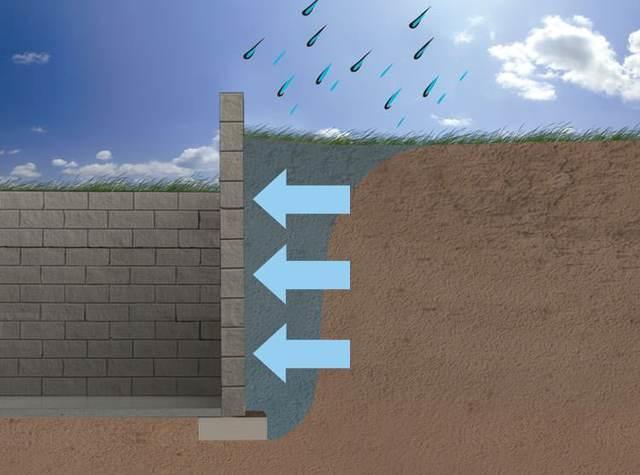What Causes My Walls To Bow and Crack?
You may not realize this, but the soil around your home puts a lot of pressure on your foundation walls. The amount of pressure varies depending on the type of soil around the home, the amount of moisture in the soil, and how deep the foundation is under the ground. When you think about it, there is nothing on the inside of your basement walls pushing back.
It is important to know the signs of foundation wall failure.
- Horizontal Cracking: Near the middle of the wall is one of the first symptoms you will notice in the case of a bowing
 wall. These cracks tend to start out small and increase over time as the soil outside continues to put pressure on the wall.
wall. These cracks tend to start out small and increase over time as the soil outside continues to put pressure on the wall. - Stair- Step Cracking: This is another sign of a bowing wall, typically meaning your foundation problem is getting worse.
- Pushing- In At The Bottom Of The Wall: If your basement walls to begins to push in severely, you may notice the wall sliding inward near the bottom. This happens when the concrete floor holds the bottom row of blocks in place as the rest of wall cracks and pushes in.
- Sliding In At The Top Of The Wall: When this happens you are dealing with a very serious structural problem because the connection of your foundation wall to the framing of the home has been compromised.
How did your basement walls get this way?
Hydrostatic Pressure -The soil around your home puts a lot of pressure on your foundation walls. This type of pressure is called Hydrostatic Pressure. Hydrostatic Pressure is the pressure exerted by a fluid due to the force of gravity. Simply put, as water saturates the backfill soils around your foundation, the water exerts pressure against the wall.

Frost -In this area with cold winter climates, frost can put pressure on a wall and cause it to fail, especially if the basement is unheated. Frost forces can be extremely powerful and can even lift shallow foundations up out of the ground, causing significant damage to the home.
Clay Soil -Clay expands and contracts as the amount of moisture in the ground increases and decreases. This happens because clay soil shrinks when it's dry. On the other hand, when it rains and clay soil gets wet, it expands. As clay soil expands in size, it puts a lot of pressure on your basement walls. When the pressure becomes more than the wall can handle, the wall will begin to push inward.
Finding a reliable and trustworthy contractor is imperative to ensure the infrastructure of your home is properly cared for. That's why here at Healthy Spaces we offer a FREE inspection with one of our Design Specialist to make sure your foundation is fixed permanently.

